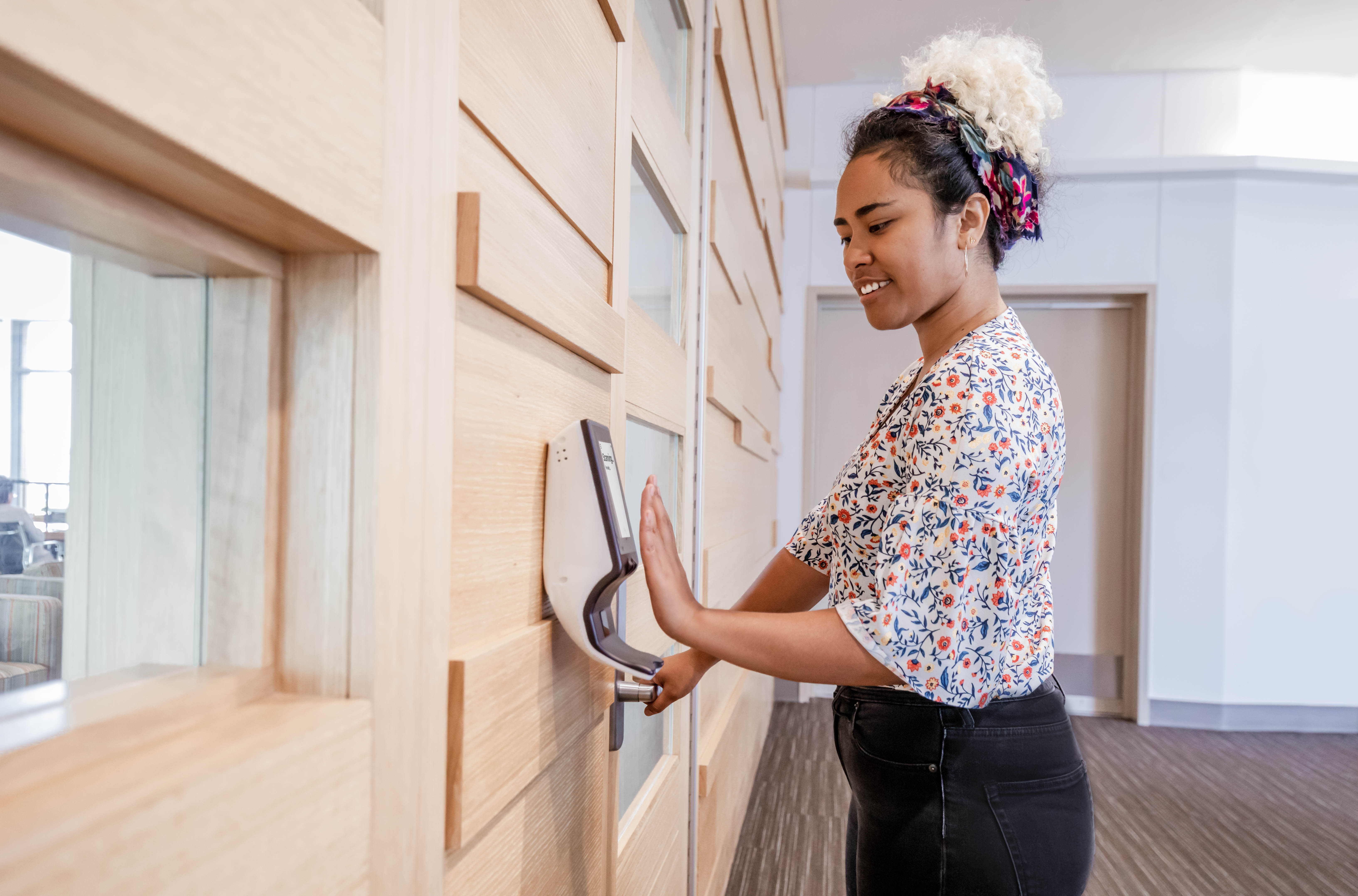 API-First Vs. Single Brand ID Networks" />
API-First Vs. Single Brand ID Networks" />
There’s a chance that the above title seems puzzling to you and sparks a few questions: what does API-first mean? What’s a single brand ID network?
Have no fear. We’ll get into the basics first before we start comparing companies and different approaches to ID verification technology. A note: the ID verification industry is vast and growing exponentially. In this post, we’ll focus purely on in-person ID verification that uses biometrics.
To begin: what is an API?
An API is a set of programming code that acts as a means of communication between two software applications. It allows applications to send and receive messages, in order for an overall system to work.
Packy McCormick’s fantastic Substack newsletter publication has a solid explanation of APIs and API-first companies. This blog post borrows some of the concepts he covers, and applies them to the ID verification world. If you’re looking for a deep dive into the impact API-first companies have in the business and tech worlds, I can’t recommend his newsletter enough.
What is an API-first company?
It’s a company that focuses on doing a specific function or set of functions really well, and enables other businesses to do that function via an API. Far from being generalists, API-first companies are taking the best of what they can do, and making it accessible for anyone.
To make this concept a little more tangible, let’s explore this hypothetical scenario: the difference between going to a local burger joint versus a diner in your hometown.
Let’s say that the burger joint focuses on doing burgers, shakes and fries really well. That’s it. People flock to this place and line up to get these insanely amazing burgers.
The diner on the other hand, has burgers, shakes and fries, but they also serve hot dogs, breakfast foods, sandwiches and maybe even more classic dishes like meatloaf. Their burgers are fine.
Now, let’s say there’s an event planner planning a burger-themed party. She could go and whip up the burgers herself, but that takes a lot of time, effort and money.
So instead, she wants to hire a local restaurant to make the burgers for her. Which do you think the planner will hire? The restaurant that specializes in burgers or the restaurant that serves a multitude of dishes?
API-first companies are like the burger joint: their job is to deliver one thing that their customers can use for their benefit, without having to build it in-house themselves.
Here’s a real-life example
Stripe - they provide a payments infrastructure for the internet. When they began, their focus was on making it so anyone could use their API to do payment processing that was fast, simple and had less fees than traditional banking. Today, SMBs to Fortune 500 companies use Stripe for its unique capability to do payment processing extremely well.
Though Stripe has expanded their products since their infancy, they’re ultimately still focused in the payment processing space ( and yes, that includes crypto now).
So, what’s an API-first ID network then?
A company that does ID verification extremely well, and allows other companies to use their ID verification software/tech for their benefit via an API.
Keyo is an API-first ID network. We’re used across a variety of industries and our ID verification is used in a myriad of use cases: healthcare, payments, access control, and who knows what’s next.
Keyo only does contactless ID verification using palm vein recognition--which includes keeping people's IDs encrypted, secure and compliant. It’s our raison d’être, our bread and butter. We’re not interested in doing things outside of this realm. Our goal is to get our ID verification tech into the hands of any business looking to add it onto their operations.
However, just to clarify, Keyo does allow contactless ID verification to be attached to other functions, like payments or tickets. We ourselves are not a payment processing or ticketing company, but we allow those companies to add contactless ID verification to their user experiences.
What is a single brand ID network?
It’s a company whose ID verification technology will only operate under its own brand umbrella.
An example is Amazon One, the palm print ID verification Amazon has rolled out. This ID verification is mostly being used in its own brick-and-mortar stores at the moment: Whole Foods, Amazon Books, Amazon 4 Star, Amazon Go, Amazon Fresh and now Amazon Style.
While Amazon One has expanded to some non-Amazon entities, it’s primarily operating under its own brand. (And it has a ways to go in terms of expansion, due to privacy concerns).
Here’s a glance at Amazon's latest venture
Amazon is taking their online retail shopping experience and putting it in a real-world clothing store called Amazon Style. The store will premiere at the Americana, an upscale shopping mall in Los Angeles. Amazon Style will use different tech innovations, including Amazon One, to make the shopping experience ‘seamless.'
The choice to keep Amazon One under the Amazon umbrella is high risk, high reward.
It’s a high reward in that if the public likes the Amazon One experience and the influencer-designed clothes that Amazon is rolling out, Amazon will have gained a real foot in the door of clothing retail. Additionally, this success would help the public be more likely to accept Amazon One in other Amazon stores.
Then, there’s the high risk of locking these technologies into their own brand, and competing against household retail stores and fashion lines that the public has known and trusted for decades (in some cases, a century).
Instead of Amazon piloting in a retail giant like Nordstrom, they're competing against them. Amazon is betting that the seamless experience they’re offering will bring people to their store over long-held department stores and the like.
By keeping their ID network only within their brand, they’re severely limiting themselves in the scope of how Amazon One will meet the public. There are arguably far more influential brick-and-mortar stores than Amazon’s.
Though we’re focused on retail in this scenario, it could really apply to any industry where Amazon keeps Amazon One in their own stores, pitting them against other companies.
What an API-first ID network would look like in retail
If a retail store wants to implement an API-first company, they’re not contending with the company. They’re using the ID verification technology to make the customer experience safer, more secure and frictionless. And they’re doing all of that in the exact ways they want to.
For example, Keyo could be used in a Nordstrom, but it could also be used in a beloved local shop. That’s the flexibility we’re aiming for.
The advantage of an API-first ID network
For the businesses the ID company is serving:
The beauty of working with an API-first ID company is that there isn’t any need to build ID verification in house ( remember the burgers?). Businesses get to skip the hassle, and the expenditure of money and time.
Instead, they’re adding the pre-existing functionality of ID verification, all with just the API (among other things, SDK, hardware, etc). They get to add on the expertise of another company.
For consumers:
Since businesses can add on ID verification in a simpler way, this technology is made more readily available across different industries. The technology won’t be constrained to a single brand or company that they’d have to use in order to experience a certain level of ease, convenience or safety during the ID verification process.
Middle of the road
There are companies that occupy the space between ID verification companies being extremely flexible and those that operate only under their own brand.
CLEAR is one of those companies. They’re being used in airports and stadiums across the U.S. for ID verification; their biometrics are facial recognition and iris scanning. CLEAR operates in companies outside of their own, so they’re not a single brand ID network.
But CLEAR isn’t so flexible that any company can use CLEAR across any use case for ID verification. They’re currently only being used in large settings for the masses, and primarily for ID verification and ticketing.
Maybe they’ll eventually move towards being more flexible, or they’ll continue partnering with large fortune 500 companies and venues. In the meantime, they’re reaping the benefits of being in the middle: their brand is recognizable, expanding constantly, and they’re doing it without having to integrate with thousands of businesses to make it happen.
However, other in-person ID networks are entering a rapidly expanding market, and flexibility could ultimately be a winning factor over CLEAR.
Final thoughts
As you can see, these differing ID networks each have a unique approach to bringing contactless, biometric identity verification to the physical world. At the end of the day, no matter the benefits of each network, consumer safety and privacy should always be prioritized.



